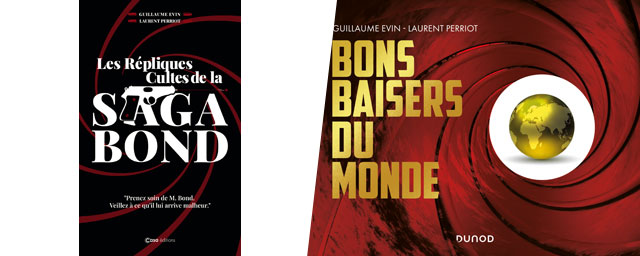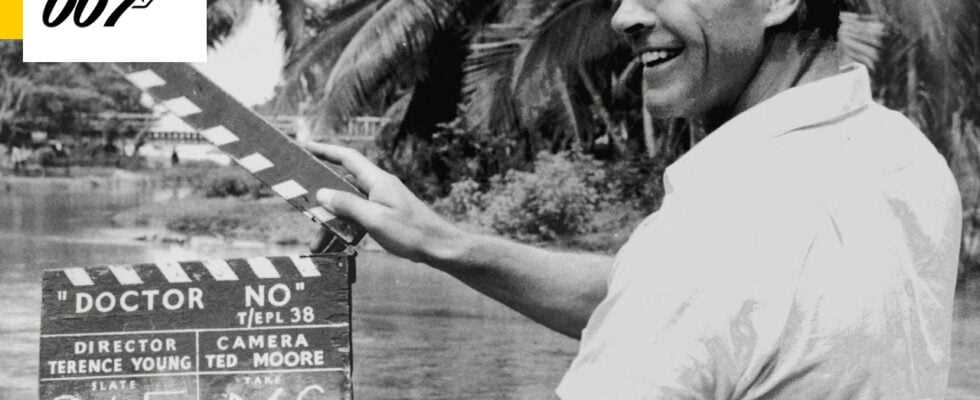In January 1962, Sean Connery donned the James Bond costume for the very first time when the first claps were given on the set of “Dr. No”. A look back at the first of twenty-five 007 films, with expert Laurent Perriot.
And for the very first time, his name was Bond, James Bond. Apart from the little-known Casino Royale of 1954, it was in 1962 that the most famous secret agent really came to life on screen. It’s January 16, and Sean Connery takes his first steps as 007, in front of Terence Young’s camera, in James Bond 007 vs. Dr. No.
While the franchise and Daniel Craig offered a new end to the character in Dying can wait last year, a look back at the birth of James Bond in the cinema with expert Laurent Perriot (www.facebook.com/LaurentPerriotOfficial), co-founder of the James Bond fan club in France in 1989 and author of the books Good Kisses of the World (2020) and The cult replicas of the Saga Bond (2021). An interview in 007 questions, of course.
AlloCiné: We are celebrating the 60th anniversary of the start of the filming of “Dr. No”. What do we know about the media coverage of this event at the time? Was it precisely an event or a “lambda” film?
Laurent Perriot: “Great!” enthused Ian Fleming at the London premiere. The spectators will follow with the same joy. James Bond 007 vs. Dr. No is perceived as a film that dusts off the spy films of the 1930s.
How was Sean Connery chosen for the role?
It was Dana Broccoli, wife of Cubby Broccoli, who was the first to suggest Sean Connery for the role of James Bond after seeing him in the Disney film Darby O’Gill and the Sprites. She is the source of his choice. For the role of Dr. No, Ian Fleming first asked his friends and a resident of Jamaica, Noel Coward, to play the character. All refused. Christopher Lee, a distant cousin of Fleming, also turned down the role, although he would later play Scaramanga in The Man with the Golden Gun. Terence Young, meanwhile, would have loved Cary Crant.
How did “Dr. No” already lay all the foundations for what will make the James Bond franchise?
Before being considered as the beginning of a franchise, this first part establishes a formula: luxury, exoticism, glamour, adventure and action. James Bond 007 vs. Dr. No also incorporates geopolitical tensions: the scenario makes the action, contrary to the usual narratives of the genre. And from the credits – a stylized creation by Maurice Binder -, the iconography is in place: Bond seen in the barrel of a revolver, he shoots, blood covers the screen, female silhouettes and dreamlike images appear.. This iconography will become emblematic. Another ingredient, the immediate use of the main musical theme, an instrumental score written by Monty Norman, arranged and re-orchestrated by John Barry. Without forgetting the incredible perspectives of Ken Adam’s sets.
Among the cult sequences of the film, there is obviously Ursula Andress / Honey Rider coming out of the water. What do we know behind the scenes of this scene?
Its appearance literally marked the history of cinema, becoming a cult scene, immediately injected into the Western collective unconscious. It is a plan freely inspired by The birth of Venus by Botticelli. The James Bond Girl myth was born… To create this legendary piece, Ursula Andress and costume designer Tessa Prendergast worked together: the bikini consists of a bra tied on the chest and a triangle, all in ivory cotton. The particularity of this very simple two-piece: a belt fitted on the hips and a notch on the side to support a dagger. This detail gives literal meaning to the concept of femme fatale. The beach where Honey Rider appears emerging from the water, adjoining Ian Fleming’s estate (baptized GoldenEye) and indicated to the film crew by Chris Blackwell, will later be renamed ‘James Bond Beach’.
Ian Fleming died in 1964, two years after the film was released. Was he able to visit the set?
Yes, Ian Fleming largely attended the filming of the film in Jamaica (where he otherwise resided). He saw and
liked the movie. He also attended and saw the next one, Kisses from Russia. He also visited the set of the third James Bond film, Goldfinger, but died before seeing the film.
As a 007 expert, did you have the opportunity to meet veterans of this first shoot? What memories do they keep?
I had the chance to meet Terence Young at home in Cannes for a long afternoon. Inventive, he used many tricks to compensate for the lack of financial means of the production: precision of the framing, alternation of interior and exterior shots, flamboyant colors… It was also Terence Young who shaped the image of James Bond and gave him his style, bringing Sean Connery at his own tailor on Savill Row.
Can you share some anecdotes unknown to the general public around this film?
- The two main actresses of the film, Ursula Andress and Eunice Gayson, were dubbed in the VO by Nikki Van der Zyl. This was the case for almost all the James Bond Girls of the 1960s.
- When Bond enters Dr. No’s dining room, he notices a portrait of the Duke of Wellington by Goya: this painting had been stolen from the National Portrait Gallery in London in 1961 and only found in 1965. Dr. No would therefore have, according to the film, was the sponsor of the theft!
- On the budget side, $1 million spent for $60 million in revenue: for comparison, SkyFall in 2012 requested $200 million in budget for $1.1 billion in revenue.
- The only budget Dr.No is equivalent to the phone bill for the filming of Moonraker in 1979.
- Anthony Dawson who plays Professor Dent (the man with the tarantula) will also be the hands of Blofeld who we see in the next two James Bonds.
Bonus question for the fan that you are: do you remember your first discovery of “Dr. No”? What memories do you have of it? What does the film represent for you?
I discovered the film in the early 80s on VHS, then a few years later finally on the big
screen when exiting. In the midst of Roger Moore’s glorious period, I inevitably found the film “a bit old-fashioned” at the time, but I immediately understood the impact and the strength of Sean Connery. And of course I was struck by the basic elements and foundations that forged the cinematographic saga.

Bons Kisses du Monde
- by Guillaume Evin & Laurent Perriot
- Editions Dunod, 216 pages, €29.90
- “Through the 216 pages of this unprecedented cinematographic atlas, peppered with anecdotes, rare photos and detailed maps for each film, travel the planet in the footsteps of 007.”
The cult replicas of the James Bond saga
- by Guillaume Evin & Laurent Perriot
- Editions Casa, 112 pages, €12.50
- “Since the Bonds remain spectacular entertainment, here are forty shaken and agitated replicas to be enjoyed without moderation, which make – among other things of course – the charm and the success of an eternal series.”
